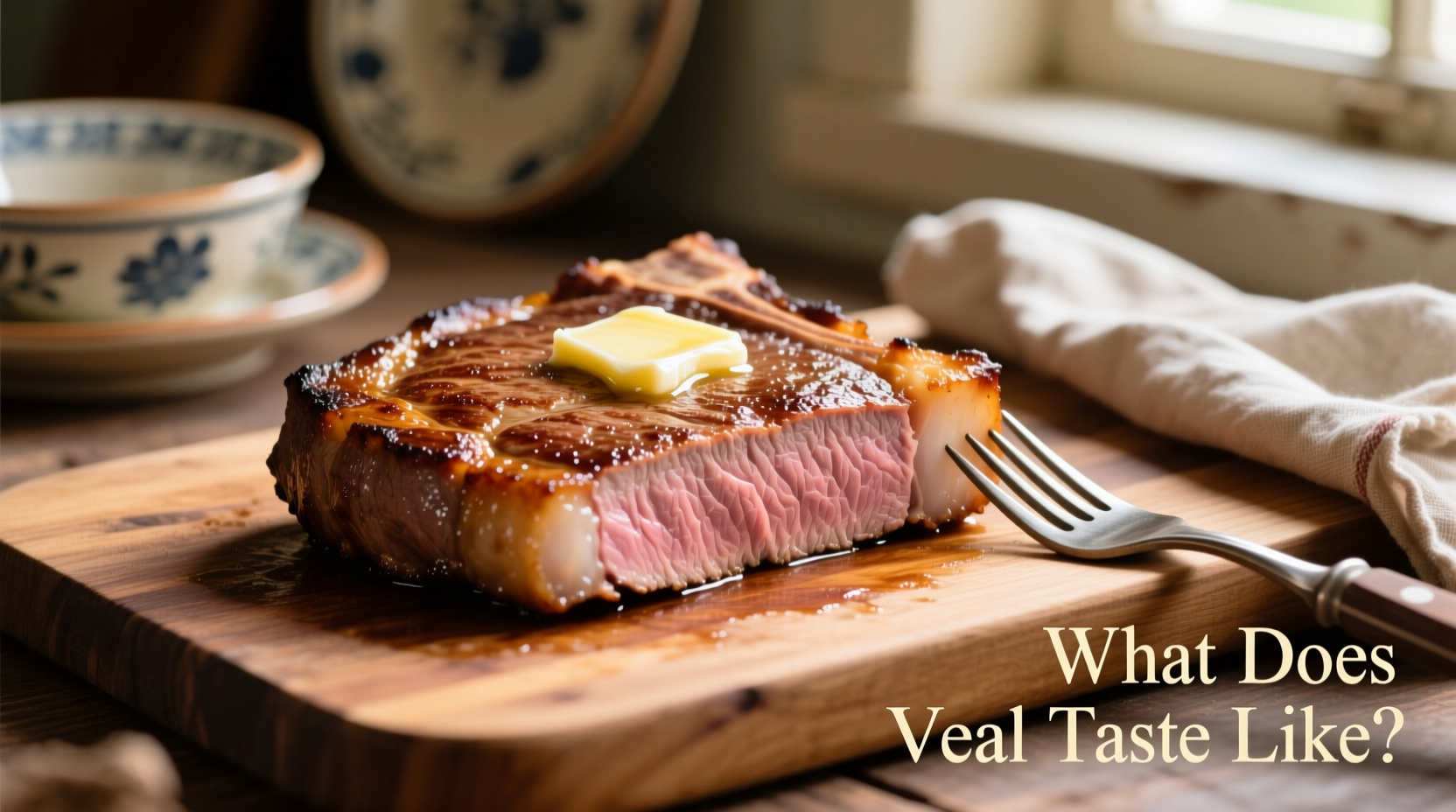Understanding veal's unique flavor characteristics helps both curious food enthusiasts and home cooks make informed decisions. As a French-trained chef specializing in European culinary traditions where veal features prominently in classics like Wiener schnitzel and blanquette de veau, I've worked extensively with this premium protein across Michelin-starred kitchens and home cooking demonstrations.
The Science Behind Veal's Distinctive Taste
Veal comes from calves typically slaughtered between 18-20 weeks of age, significantly younger than beef cattle. This youth directly impacts its flavor chemistry. Calves have lower myoglobin levels—the protein responsible for meat's red color and robust flavor—resulting in paler meat with milder taste. The USDA Agricultural Research Service confirms that younger animals produce meat with less intense flavor compounds due to undeveloped muscle fibers and different fat composition.
Unlike beef, which develops complex flavor notes from years of grazing and muscle development, veal's flavor remains remarkably neutral. This characteristic makes it incredibly versatile in the kitchen, serving as a blank canvas for creative seasoning while maintaining its signature tenderness.

Factors That Shape Veal's Flavor Profile
Not all veal tastes identical—several critical factors influence its final flavor:
- Diet: Milk-fed veal (often labeled "milk veal" or "special-fed") has the mildest flavor with delicate sweetness, while grain-finished "rose veal" develops slightly more pronounced beef-like notes
- Aging: Properly aged veal (typically 10-14 days) develops more complex flavor while maintaining tenderness
- Cut selection: Loin and rib cuts offer the most delicate flavor, while shank and shoulder have slightly stronger taste
- Production methods: Pasture-raised veal shows subtle grassy notes compared to indoor-raised varieties
Veal vs. Other Meats: A Flavor Comparison
| Meat Type | Flavor Intensity | Texture | Best Cooking Methods |
|---|---|---|---|
| Veal (milk-fed) | Very mild, subtle sweetness | Extremely tender, fine-grained | Pan-searing, braising, scallopini |
| Beef (prime) | Robust, pronounced 'meaty' notes | Firmer, more fibrous | Grilling, roasting, broiling |
| Pork | Moderate, slightly sweet | Firm but tender | Roasting, grilling, braising |
| Chicken | Mild but distinct poultry notes | Variable by cut | Versatile cooking methods |
How Cooking Methods Transform Veal's Flavor
The cooking technique dramatically affects veal's final taste experience. Unlike beef which benefits from high-heat searing, veal requires more nuanced approaches:
- Pan-searing: Creates delicate golden crust while preserving moisture—ideal for veal cutlets at 130-135°F internal temperature
- Braising: Transforms tougher cuts like shank into meltingly tender morsels with rich flavor development through slow cooking in liquid
- Grilling: Best for thicker cuts with careful temperature control to prevent drying
- Poaching: Preserves the most delicate flavor profile, perfect for traditional French preparations
Overcooking veal past 145°F causes significant flavor and texture degradation—the meat becomes dry and loses its characteristic tenderness. The James Beard Foundation's culinary research confirms that precise temperature control is essential for optimal veal preparation.
Perfect Pairings for Veal's Delicate Flavor
Veal's mild nature makes it exceptionally receptive to complementary flavors. Traditional European pairings enhance rather than overwhelm its delicate profile:
- Classic French: Morel cream sauce, lemon-caper butter, or delicate mushroom preparations
- Italian: Fresh sage and prosciutto, light tomato sauces, or lemon-herb gremolata
- German/Austrian: Simple preparations like Wiener schnitzel with lemon wedge let the meat shine
- Wine pairings: Light-bodied reds like Pinot Noir or dry whites like Grüner Veltliner
When seasoning veal, remember that less is often more. Heavy spices can mask its subtle qualities. Fresh herbs, citrus, and delicate aromatics create the most harmonious flavor combinations that showcase rather than conceal veal's unique characteristics.
Common Misconceptions About Veal's Taste
Several myths persist about veal's flavor profile:
- "Veal tastes like chicken"—While both are mild, veal has distinctive buttery richness and meatiness that chicken lacks
- "All veal tastes the same"—Production methods create significant flavor variations between milk-fed and rose veal
- "Veal has no flavor"—This misconception stems from poor cooking techniques rather than the meat itself
According to culinary research published by the Culinary Institute of America, properly prepared veal demonstrates complex flavor notes including subtle nuttiness and delicate sweetness that distinguish it from other proteins.
Practical Tips for First-Time Veal Cooks
For those new to cooking veal, follow these professional recommendations:
- Start with loin or rib cutlets—they're most forgiving for beginners
- Pat meat thoroughly dry before cooking for optimal searing
- Use moderate heat—veal burns easily due to lower fat content
- Season simply with salt, pepper, and fresh herbs
- Rest cooked veal 5 minutes before serving to preserve juices
- Pair with light starches like risotto or mashed potatoes that won't overwhelm
When selecting veal, look for pale pink color (not gray), firm texture, and minimal liquid in the packaging. The American Meat Science Association recommends purchasing from reputable sources that specify production methods, as this directly impacts both flavor and ethical considerations.











 浙公网安备
33010002000092号
浙公网安备
33010002000092号 浙B2-20120091-4
浙B2-20120091-4